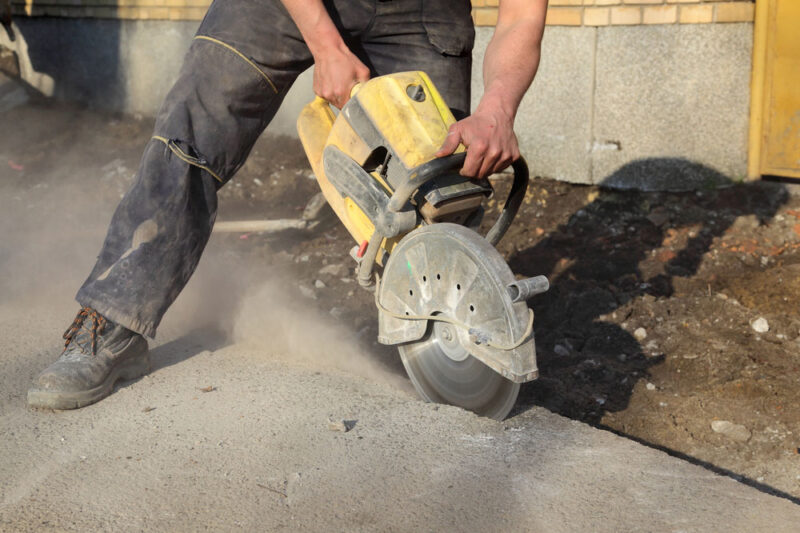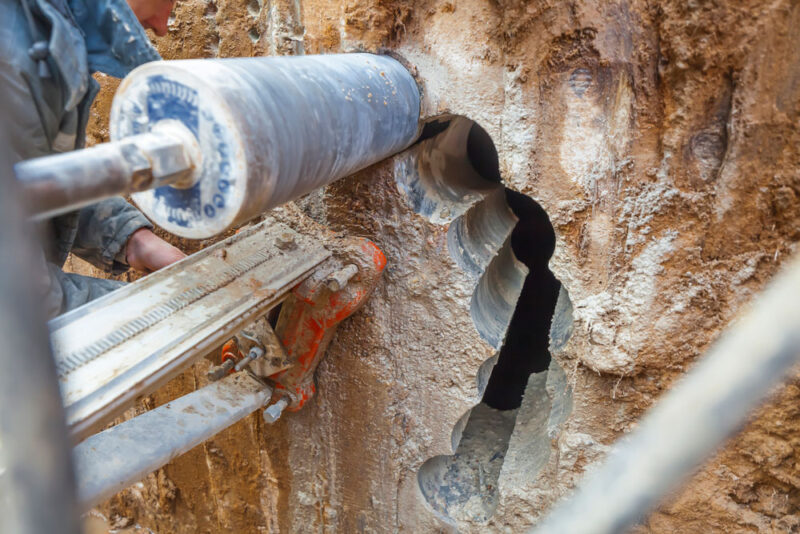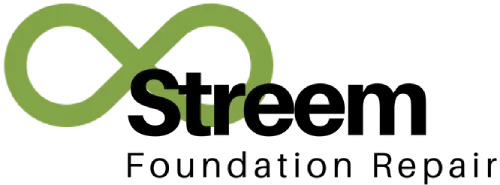Concrete coring and sawing are done with diamond-tipped drill bits and blades. It’s the least destructive method for removing concrete or forming penetrations in concrete surfaces, because it causes the least amount of structural damage to the rest of the concrete. The diamond-tipped blades will also cut through reinforcing steel inside the concrete.
The entire operation is quick, quiet, and environmentally friendly. Health and safety risks can be easily identified so they can be minimized or even eliminated, but contractors and building owners must make sure they get the right information from a qualified professional before they make any structural modifications.
Common Methods for Cutting Reinforced Concrete

A number of methods can be used to produce clean, dust-free, and accurate cuts in reinforced concrete and other building materials. Some of them can include concrete sawing inside walls and soffits, as well as wire and ring sawing. Other methods used for cutting concrete can include the following:
- Handheld Sawing — Hand saws can be used in a number of applications (from saw-cut floors and concrete precast walls to concrete pipes and beams), but they also have the biggest potential to injure someone who isn’t trained in their operation. They’re often used in small spaces that are inaccessible to a floor saw. And while most hand saws are gas-powered, there are many (such as hydraulic, single-phase electric, and hi-frequency) that are more suitable for indoor use.
- Track-Mounted Wall Sawing — This method is used to cut concrete and to remove walls (mostly for the purpose of forming large openings for doorways or ducts for HVAC units). They can make very accurate cuts, and they can be controlled remotely so operators can be free from any possible dangers.
- Wire Sawing — A continuous loop of diamond wire is “wrapped” around the concrete, which is what makes this method so versatile. It can even cut through the reinforcing steel, but it’s not as accurate as other concrete cutting techniques. Like a track-mounted wall saw, a wire saw can be controlled from a remote location. They’re also very quiet, which can be helpful if they’re used in areas where noise levels have to be controlled (such as in hospitals or hotels).
- Floor Sawing — Also called road sawing, ground sawing, or flat sawing, this is a tool that all professional concrete cutting companies use with walk-behind machines. The blades can be in a number gas-powered and diesel saws from 18 to 54 horsepower (depending on the manufacturer). There are even three-phase electric saws that can be used for interior applications, which will eliminate the risk of carbon monoxide poisoning.
Concrete cutting is often used in construction projects where stone, terra-cotta, concrete brick, and cemented concrete blocks are the primary materials. It can be used to build a number of structures, which can include the following:
- Dams.
- Piers and wharves.
- Parking garages.
- Nuclear power plants.
- Sewage treatment plants.
- Chemical plants.
- Interstate highways and bridges.
On a smaller scale, concrete cutting can be used to make or enlarge doorways, window frames, and bulkhead openings. It can also be used to cut trenches for plumbing, sump pumps, drains, electrical conduits, and other utility lines.
.
The Purpose of Concrete Core Drilling
Concrete coring can be used to form penetrations inside precast panels, block walls, beams, and concrete floors for the purpose of installing the following:
- Plumbing service pipes.
- Electrical conduits.
- HVAC units.
Specialized tools can be used for deep-core drilling, which is typically used to form a round hole inside concrete or masonry for the purpose of performing a number of servicing and reinforcement procedures. They’re also used during seismic upgrades, where post-tensional rods can be grouted into the walls of buildings. The drill is used to remove a cylinder of material, which is called a “core.” It’s often used in the following applications:
- Walls, floor slabs, and ceilings where electrical and communications services, cabling, plumbing, and HVAC systems need to be installed.
- Slab and roadway holes for dowels, rebar tie-ins, or drainage systems.
- Recessed lighting and fixtures.
The process for coring a hole inside concrete is relatively simple. While you can find the equipment at your local hardware store, it doesn’t mean you should do it on your own. The last thing you want is to cause damage to your home, which will cost even more to fix than it would be to hire a professional.
If you’re looking for one of the best places for cutting and coring concrete in Corpus Christi, be sure to reach out to Streem Foundation Repair.
